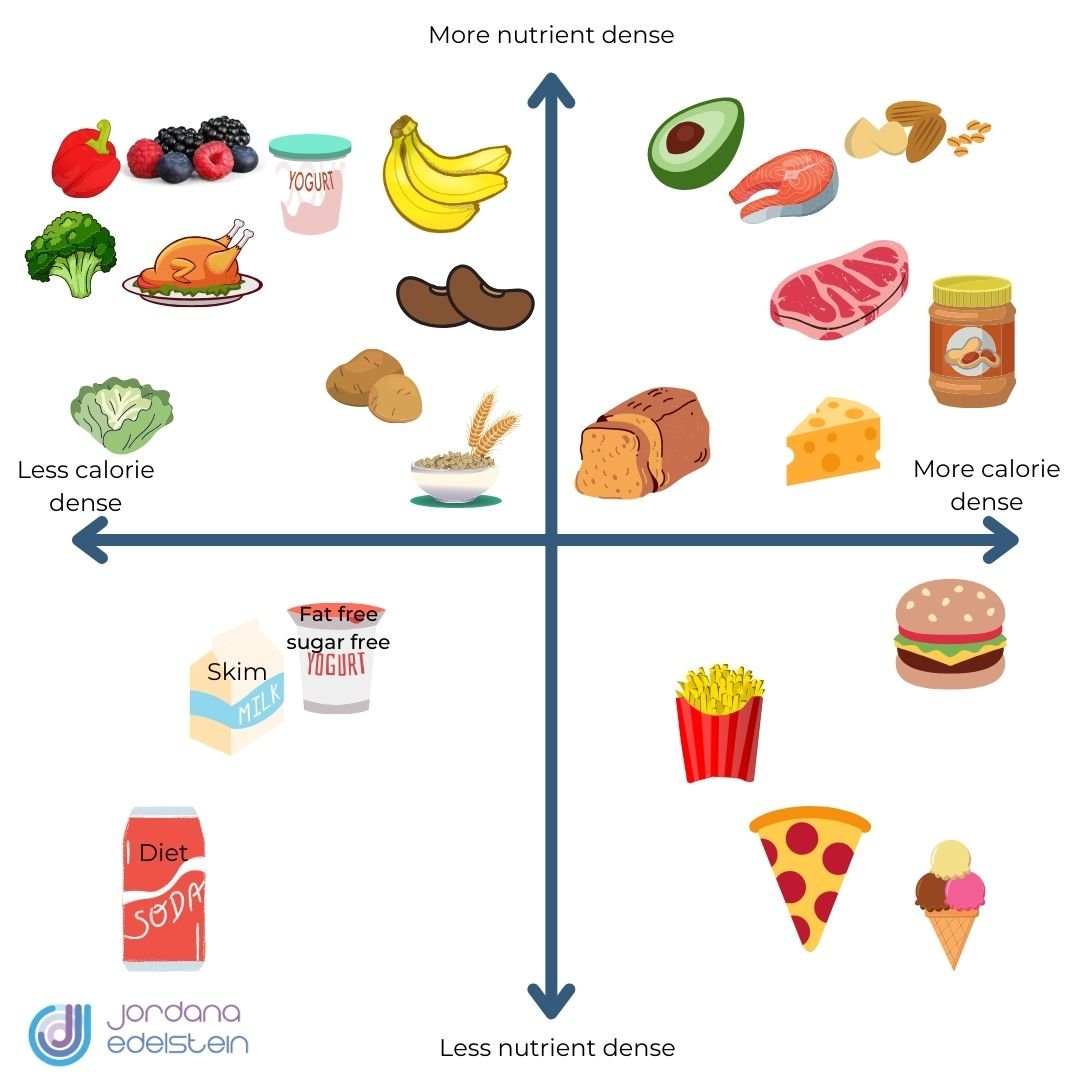volume eating: what is it and why does it matter?
Volume eating has become a bit of a buzz word recently—you may be seeing reels and TikTok’s with how this is the new way to lose 10 pounds. The good news is volume eating can play a role in weight loss and the even better news is that it helps with weight loss AND the uptick in hunger levels that usually comes along when you’re trying to lose weight.
Basically volume eating is all about choosing foods that are really nutrient dense and ALSO not very calorie dense—so you can eat a lot of food without adding a lot of calories. And when you eat this way, you end up eating less overall and that’s where the weight loss comes in.
Let’s dive in a little deeper.
Volume eating isn’t just about eating MORE food…it’s about eating more of the RIGHT types of foods. And I don’t mean right in terms good/bad, I mean right in terms of choosing foods whose job it is to deliver volume without calories. The key here is to understand the concept of nutrient density and calorie density—this infographic below sums it up really well.
Nutrient density refers to how much nutrition there is in a given amount of food. Calorie density refers to how many calories there are in a given amount of food. And there is a relationship between these two amounts which is why they are represented using a grid and not a straight line.
Some foods are really calorie dense and not very nutrient dense (aka ice cream, cookies, cake) whereas some foods are really nutrient dense AND really calorie dense (avocado, nuts, nut butters). You get the idea.
(Understanding nutrient density and calorie density is also a SUPER helpful way to reframe the good/bad approach to food because it lets you look at food more objectively and less emotionally…but that’s a post for another day).
When we are talking about volume eating we are looking for foods in that upper left quadrant: very nutrient dense and not very calorie dense.
Why? Because those foods give us a lot of the nutrition we need without a lot of calories. THat’s a a VERY efficient way of eating, especially when you are thinking about fat loss. The other big win from this is that eating a lot of higher nutrition, lower calorie foods makes it easy to feel full after meals.
So let’s talk about what foods fit into this category!
First on the list are non starchy veggies. Greens, cucumbers, peppers, tomatoes, mushrooms, cruciferous veggies, carrots, asparagus, green beans. You name a non starchy veggie, it’s on the list.
What about starchy veggies you might ask? Great question. Higher fiber starchy veggies like winter squash are on the list. Potatoes are not. Why not? They are much more calorie dense than winter squash which means ounce for ounce potatoes will give you a lot more calories than winter squash—and the objective with volume eating is a lot of food for not a lot of calories.
What about fruit? Well fruit is definitely on the list, but as you can see on the grid, it’s in a slightly different spot than veggies. Which means you can eat use it for volume eating, but you can’t use AS MUCH of it.
Think of it like this—the further up into that top left corner you go, the larger the portion of food you can eat. The more towards the center, the less of that food you can eat (when it comes to volume eating).
Now that said, you can still eat a large portion of fruit—but not AS big as veggies.
Let’s get a little more specific with this, since large is certainly a subjective word.
For non starchy veggies you can fill up at least half of your plate at every meal. For starchy veggies (like winter squash), you can fill up to 1/3 of your plate (PLUS the half plate of non starchy!) For fruit you can fill up to 1/3 of your plate (also plus the 1/2 of non starchy). If you choose a higher fiber fruit like berries, you’ve got more flexibility (so in terms of volume eating, berries and bananas are not created equal).
Basically you can eat as many non starchy veggies as you like—they are so low calorie and have so much nutrition that it’s a win win. You need to be a little more aware of portion sizes of higher fiber starchy veggies and fruit—but they still play a big role in volume eating.
If you use volume eating at all 3 meals, you will make it SO MUCH easier to eat in a calorie deficit. Basically it’s subtraction by addition. Add more nutrient dense, low calorie density foods so they fill you up and by default you will eat less of the higher calorie dense foods. Over time, with consistency, this will 100% create fat loss. But the best part of that is that fat loss happens without counting calories, without restricting or taking away any foods or without following a rigid meal plan.
That’s why volume eating is one of my favorite skills to teach and practice in online nutrition coaching. Click here to learn more.
Next on your reading list:
get your free 4 minute coaching lesson
You’ve tried every diet out there but the food noise keeps getting louder and the weight won’t stay off. In this 4 minute video, I’ll explain why AND I’ll walk you through the simple fix that will change everything. Click below to watch for free.

